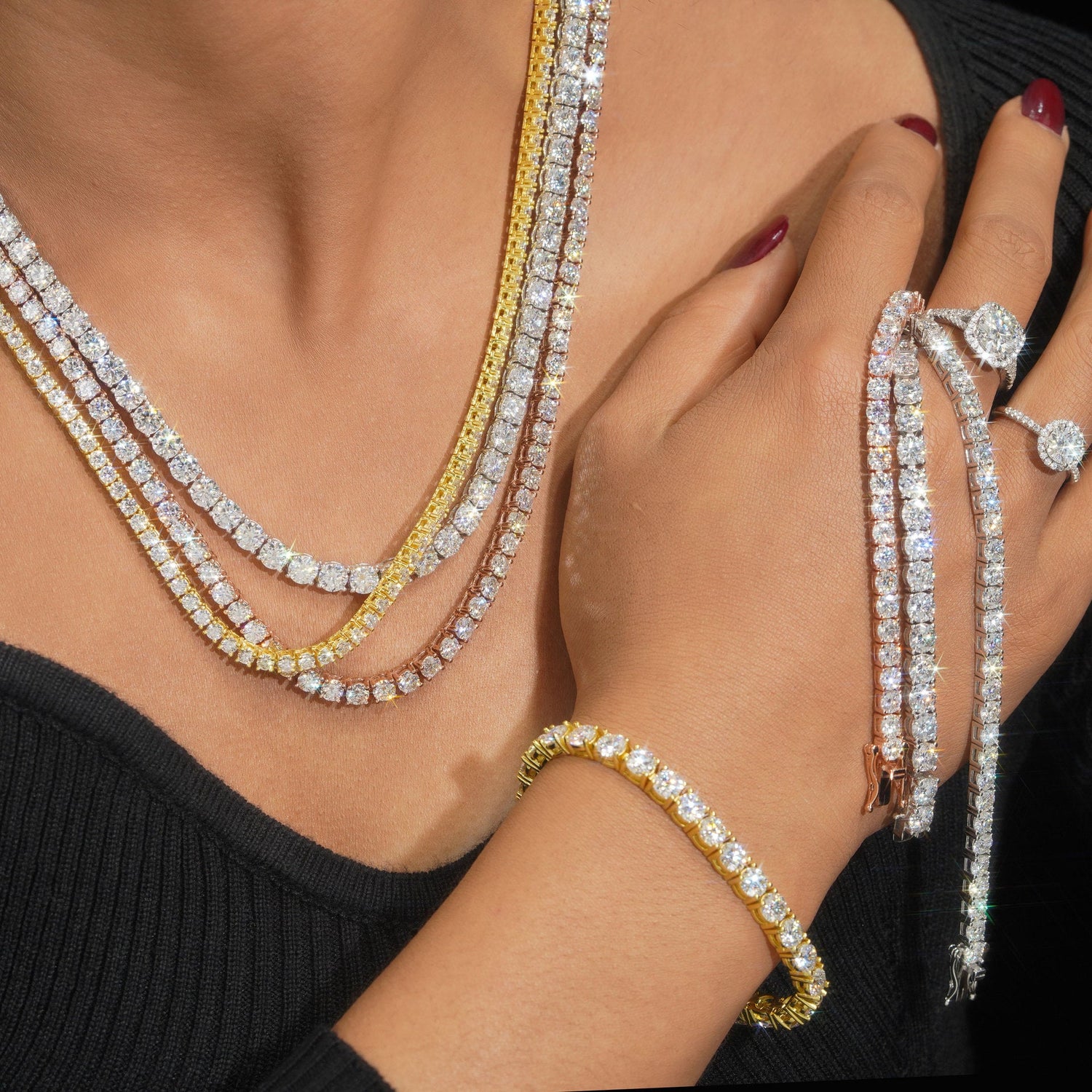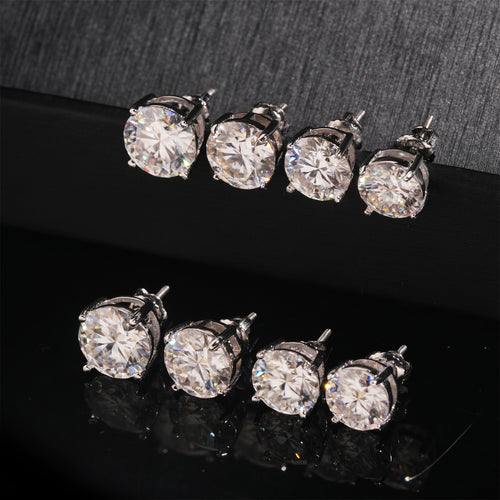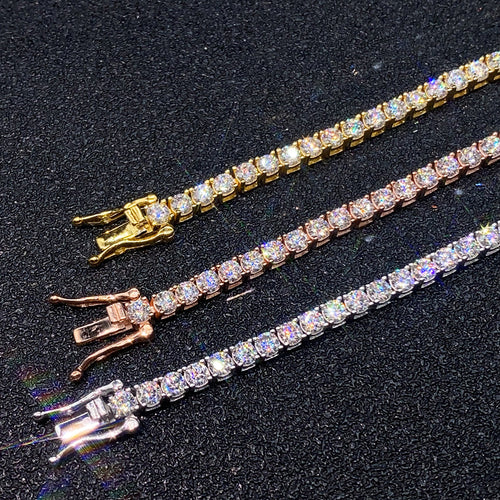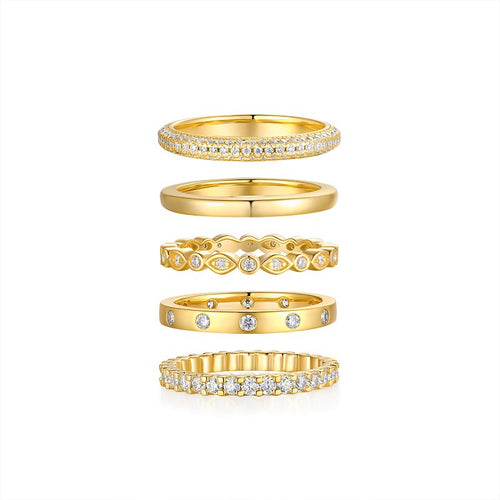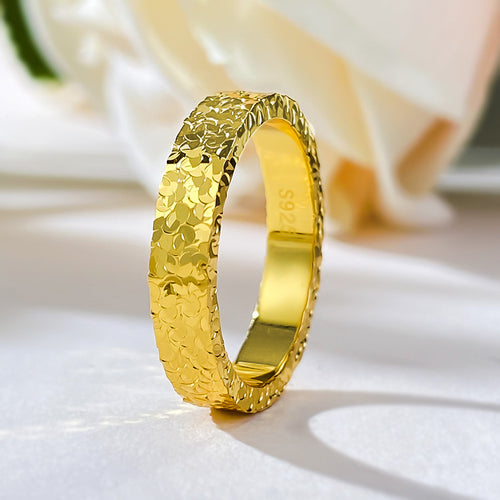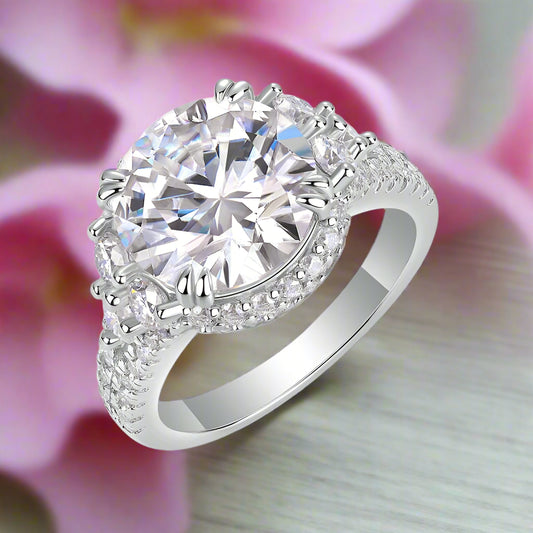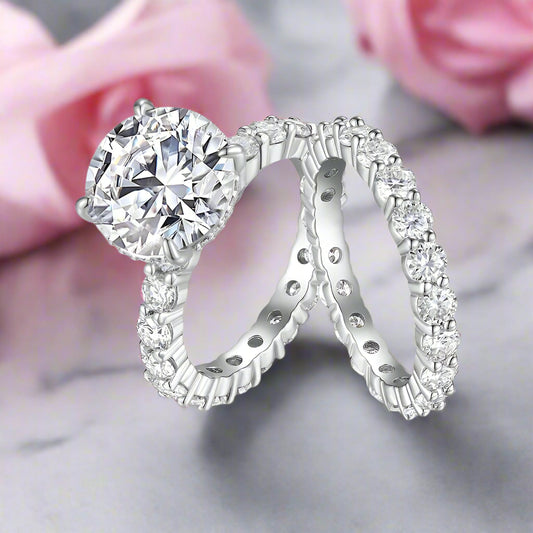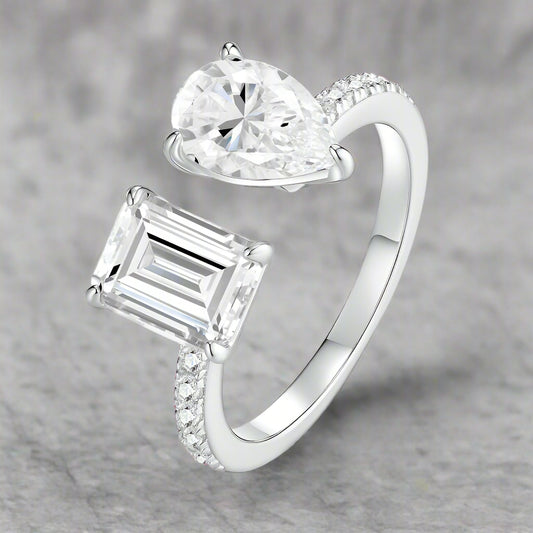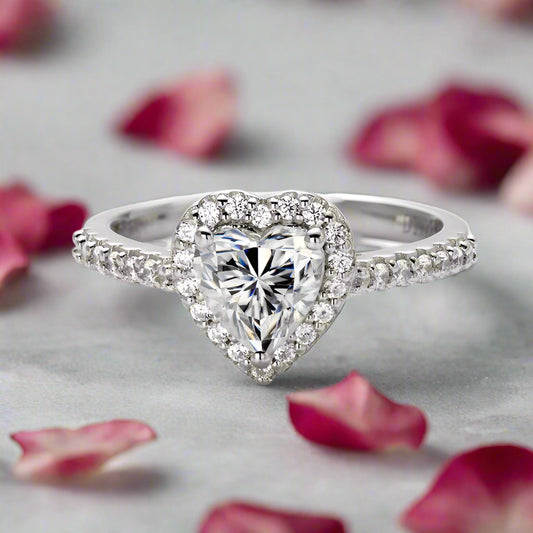When shopping for fine jewelry, one of the most common questions is: should I choose 10K or 14K gold? Both options are popular, but they differ in gold content, durability, price, and long-term value. Understanding these differences helps you make the right choice for engagement rings, wedding bands, or everyday jewelry.
What Does “K” Mean in Gold?

The “K” stands for karat, which measures gold purity. Pure gold is 24K, meaning it’s 100% gold. Since pure gold is too soft for daily wear, it’s mixed with other metals like copper, silver, zinc, or nickel to create durable alloys.
-
10K gold → 41.7% pure gold + 58.3% alloy metals
-
14K gold → 58.3% pure gold + 41.7% alloy metals
The higher the karat, the richer the color and the higher the intrinsic value. But more gold doesn’t always mean “better” - it depends on lifestyle, budget, and personal preference.
10K Gold: Affordable Strength

Composition: 41.7% gold, 58.3% alloy metals
Color: Pale yellow compared to higher karats
Hallmark: Stamped “10K” or “417”
✅ Advantages of 10K gold:
-
More affordable than higher-karat gold
-
Extremely durable, resistant to scratches and dents
-
Great choice for jewelry you’ll wear daily
❌ Disadvantages of 10K gold:
-
Less vibrant color than 14K or 18K
-
Higher chance of skin irritation (especially if nickel is present)
-
Lower resale value compared to higher-karat pieces
14K Gold: The Popular Middle Ground

Composition: 58.3% gold, 41.7% alloy metals
Color: Richer yellow, available in yellow, white, and rose
Hallmark: Stamped “14K” or “585”
✅ Advantages of 14K gold:
-
Beautiful balance of purity and durability
-
Rich, warm color that enhances diamonds and gemstones
-
Suitable for sensitive skin (often available in nickel-free alloys)
-
Retains higher resale value compared to 10K
❌ Disadvantages of 14K gold:
-
More expensive than 10K gold
-
Slightly softer, so it may show scratches sooner
-
Still less valuable than 18K or 24K for investment purposes
Comparing 10K vs 14K Gold
| Feature | 10K Gold | 14K Gold |
|---|---|---|
| Gold Content | 41.7% | 58.3% |
| Durability | Stronger, less prone to scratches | Durable but slightly softer |
| Color | Pale yellow | Richer, deeper yellow |
| Price | More affordable | Higher price due to gold content |
| Skin Sensitivity | May cause irritation | More hypoallergenic (especially nickel-free) |
| Value | Lower resale value | Higher resale value |
| Best For | Budget-friendly everyday wear | Engagement rings, fine jewelry, long-term pieces |
Color Variations: Yellow, White, and Rose

-
Yellow Gold → More vibrant in 14K, lighter in 10K.
-
White Gold → Both karats require rhodium plating for a bright silver finish; 14K offers a warmer undertone.
-
Rose Gold → 10K rose gold often looks more reddish due to higher copper content, while 14K rose gold shows a softer, pink hue.
Durability and Lifestyle Considerations
-
If you live an active lifestyle or need jewelry for heavy daily wear, 10K gold may be the most practical.
-
For an engagement ring, wedding band, or heirloom piece, 14K gold strikes the perfect balance of beauty, strength, and value.
Which Should You Choose: 10K or 14K Gold?

Your decision depends on three key factors:
-
Budget → Choose 10K if affordability is your top priority.
-
Aesthetics → Choose 14K for richer color and a more luxurious look.
-
Skin Sensitivity → Choose for 14K (nickel-free) if you have allergies.
Both options offer durability and timeless style, but 14K gold is generally the preferred choice for fine jewelry like engagement rings, while 10K gold is a practical option for budget-friendly, everyday pieces.
Final Thoughts
At ANNXMEE, we believe jewelry should reflect both your style and your lifestyle. Whether you choose 10K gold for its strength and affordability or 14K gold for its balance of purity and elegance, the best choice is the one that feels right for you.

FAQs
1. Is 10K or 14K gold better for everyday wear?
10K gold is harder and more resistant to scratches, making it ideal for daily use. However, 14K gold also offers excellent durability with a richer color.
2. Which is more valuable, 10K or 14K gold?
14K gold is more valuable because it contains 58.3% pure gold compared to 41.7% in 10K gold. It also tends to retain resale value better.
3. Does 10K gold tarnish more easily than 14K gold?
Both can tarnish over time due to alloy metals, but 10K gold may show discoloration slightly faster since it contains more alloys.
4. Is 14K gold worth the extra cost compared to 10K gold?
Yes, for many buyers. 14K gold offers a balance of beauty, durability, and value, making it the most popular choice for engagement rings and fine jewelry.
5. Which gold karat is best for sensitive skin?
14K gold is usually better for sensitive skin, especially nickel-free alloys. 10K gold’s higher alloy content increases the risk of irritation.

